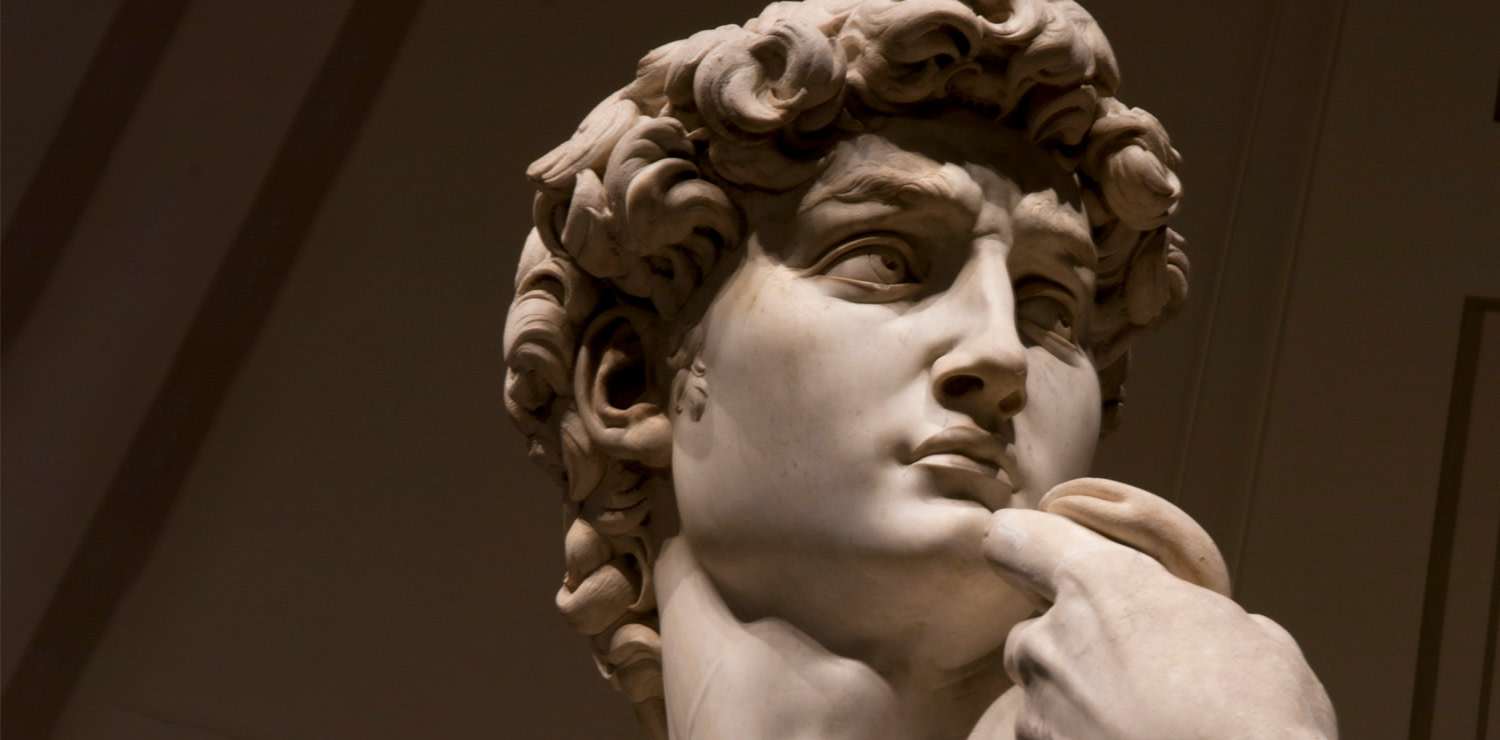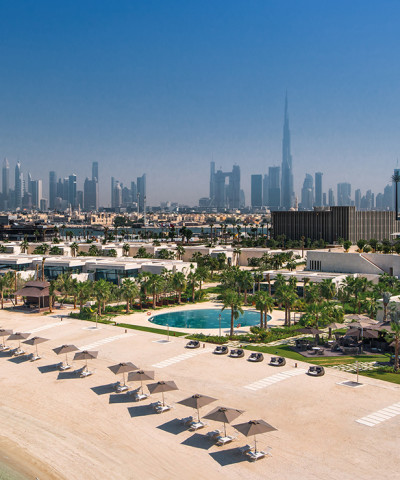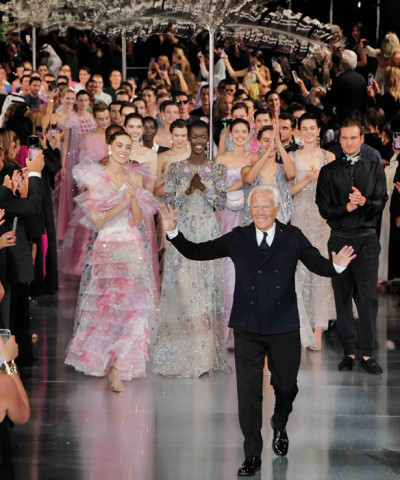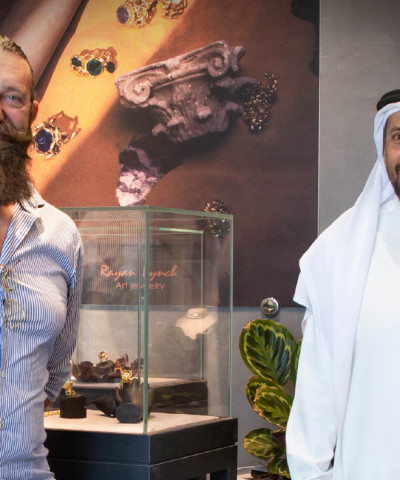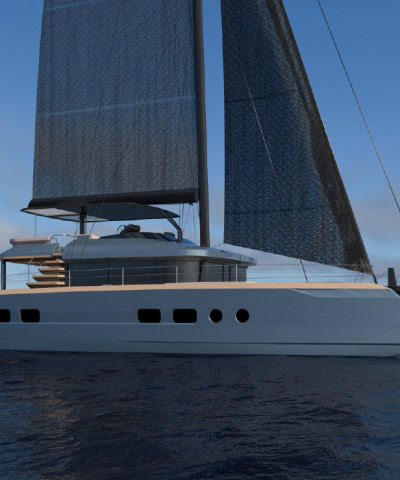Michelangelo's David and the other works of the Accademia Gallery in Florence
Cecilie Hollberg, Director of the Academy, tells us about her museum
“David, an icon of harmony and perfection, represents Italian art in Dubai, and is an invitation to visit Italy and see all of its beauty. His figure is also the bearer of an important positive message of rebirth, hope and courage” - with these words, Cecilie Hollberg, Director of the Accademia Gallery Museum, presented the 1:1 scale copy of David for the Italian Pavilion at the Dubai Expo. More than a mere copy the most famous and beloved sculpture in history, it is the result of cutting-edge ‘Made in Italy’ technology, with the young hero scanned by high precision instruments in his home in the Tribune of Florence’s Accademia Gallery Museum. On the basis of this scan, a precise physical copy was then made, and flown to Dubai to be placed at the centre of the Italian Pavilion.
 Cecilie Hollberg, director of the Accademia Gallery in Florence beautiful museums in the world (ph. Dario garofalo)
Cecilie Hollberg, director of the Accademia Gallery in Florence beautiful museums in the world (ph. Dario garofalo)“Seeing the original David”, continues the director, “in all its height and harmony, in the original material, that is, very white marble, and, last but not least, in the Tribune that plays host to it in Florence, is a different emotion. It speaks of the greatness of Michelangelo, who, at only 26 years old, created a perfect work of art. It allows us to discover an important piece of the history of a city that has kept him safe for more than 500 years. Finally, it allows you to get to know a museum that is a true treasure trove of masterpieces”.
People come from all over the world to see David today, just as in 1882, when it was transported into the museum, after spending 350 years in the square just outside, Piazza della Signoria. Before then, there was the risk of missing out on the marvellous Pontormo and Allori portraits, Bartolini sculptures, and Lorenzo Monaco golden panels, kept within the building, at the heart of the city.
 Lorenzo Bartolini’s plaster busts inside the Accademia Gallery Musseum in Florence (ph. Massimo Sestini)
Lorenzo Bartolini’s plaster busts inside the Accademia Gallery Musseum in Florence (ph. Massimo Sestini)To help us go beyond David, can you tell us about the works you treasure the most at the Academy?
It’s a difficult question. In taking care of every single work in the museum, I slowly discover them all. Because maybe they need to be restored, or because more research needs to be done on one of the pieces that has not been given enough attention. It’s the whole that makes the difference. You can’t say which is Bartolini’s most beautiful bust, or which is the most precious golden panel, but being able to see them in dialogue with each other, and knowing their stories, transports you into a fantastic world. Of course, next to David, which we have already talked about, how could we not mention the Prigioni? These beings, who try to make their way through the stone and out of the block that surrounds them, are of such breathtaking beauty, precisely because they are unfinished, and their imperfection makes them almost alive. Then, there is the sweetness of certain Madonnas, the colours and transparencies of other paintings. In every object, I find a great fascination, but I simply could not choose one over the other. I repeat, it is the whole, the dialogue that is created between the various individual works that achieves perfect.
 An almost mystical setting, where works of art from different periods create fascinating and unprecedented dialogues (ph. Guido Cozzi)
An almost mystical setting, where works of art from different periods create fascinating and unprecedented dialogues (ph. Guido Cozzi)Today, the museum has a special arrangement, since we are carrying out important modernization work.
We have just finished the huge job of the air conditioning system, and we have started work on the individual rooms, and on the lighting system. But we decided never to close the gallery, and not to take any of the work into storage. For this reason, in these months, you can enjoy a truly special, unrepeatable, almost mystical setting that is well worth seeing. The section dedicated to musical instruments is on show, a real gem of an exhibit that collects together some really rare, unique pieces, which is now directly connected, through a new passage, to the temporary exhibition rooms, spaces where it will be possible to immerse yourself in the magic of the Renaissance, thanks to the paintings arriving from the Hall of the Colossus. Entering towards the Tribune, where David stands out, the visitor is accompanied, on the way between Michelangelo’s Prigioni, by the plaster casts of Lorenzo Bartolini, which are usually kept in the Hall of Models, or the ‘Gipsoteca’. Indeed, the Gipsoteca - which ideally recreates the studio of Lorenzo Bartolini, one of the most important Italian sculptors between the eighteenth and nineteenth centuries - normally houses around 450 pieces that are usually not very visible because they are placed on high shelves. All these busts are now grouped by theme, and placed at eye level along the corridor housing the Prigioni. In the rooms of the ex-Florentine artists, usually used for temporary exhibitions, are now paintings that were, before, in the Hall of the Colossus, still closed for refurbishment. This extraordinary collection of Florentine paintings of the fifteenth and early sixteenth centuries, in this setting, also thanks also more accurate lighting, regains all of its preciousness. Think, for example, of the Thebaid by Paolo Uccello, the marvel of Cassone Adimari by ‘Lo Scheggia’, brother of the more famous ‘Masaccio’, and the Trebbio Altarpiece by Sandro Botticelli, as well as the pieces by Domenico Ghirlandaio, Lorenzo di Credi, Jacopo del Sellaio, Filippino Lippi and Mariotto Albertinelli. However, this arrangement is subject to constant changes, as we finish the various rooms, which will find their final layout in late spring. It’s certainly a museum where it never gets boring!






